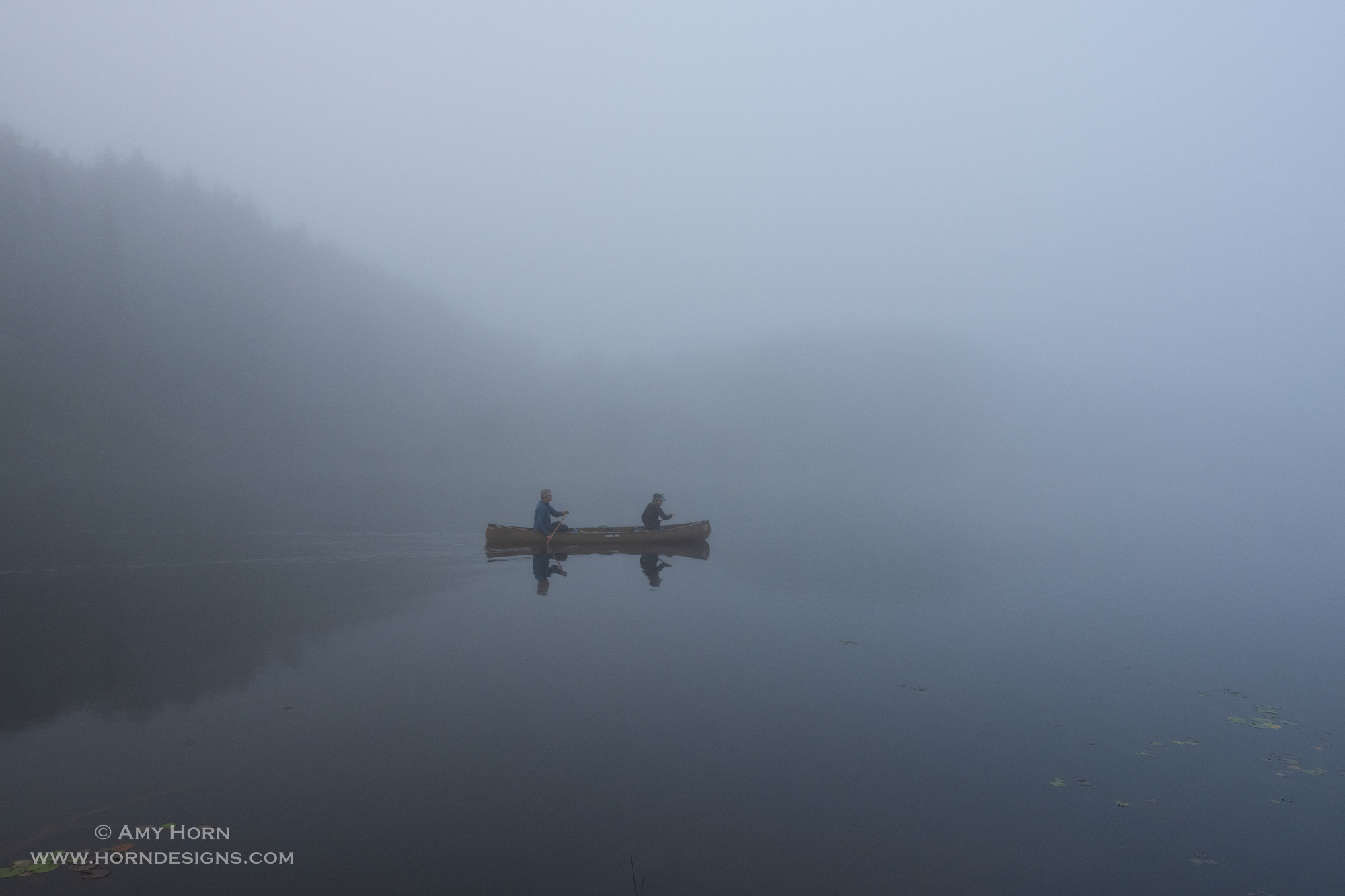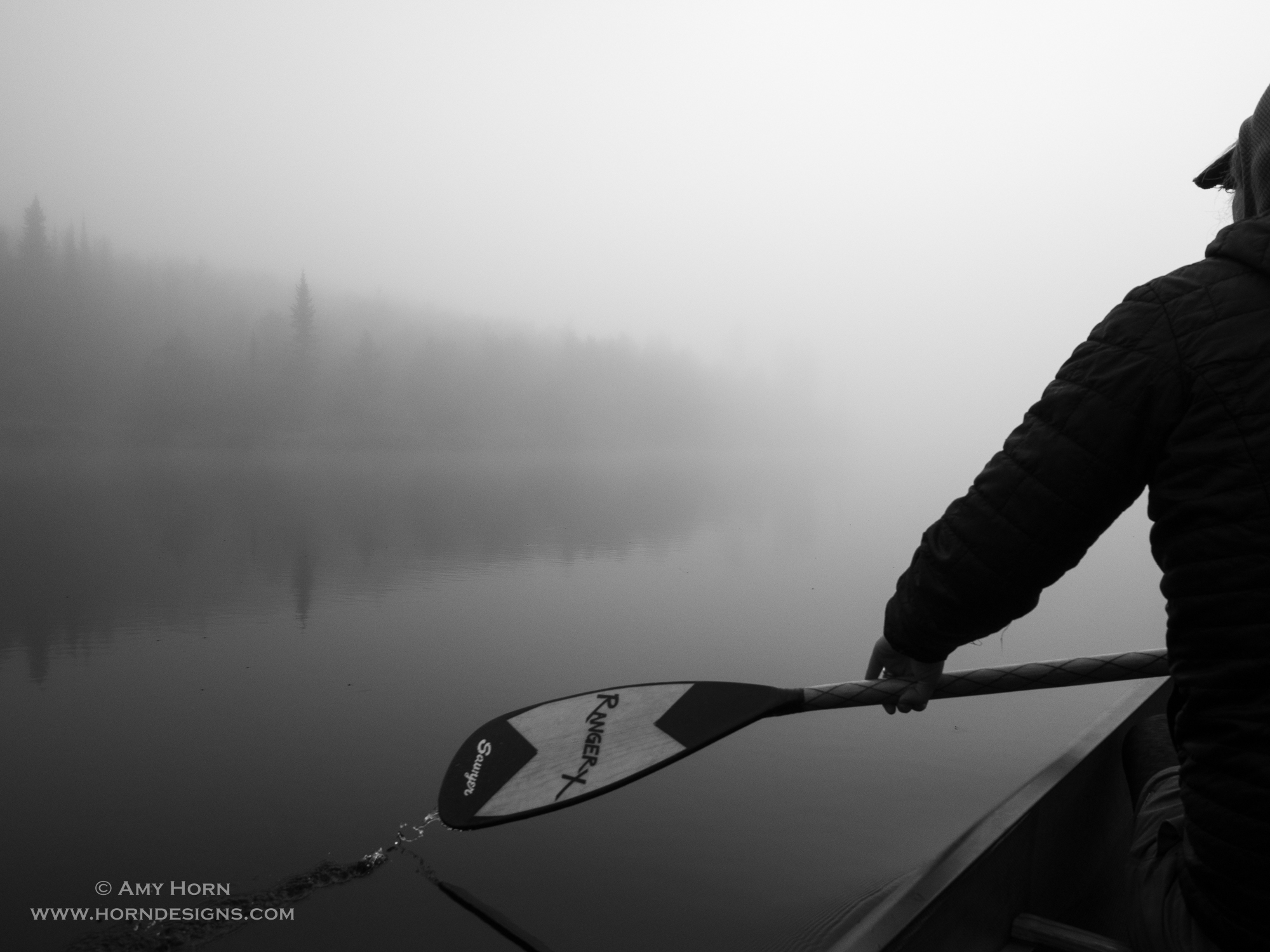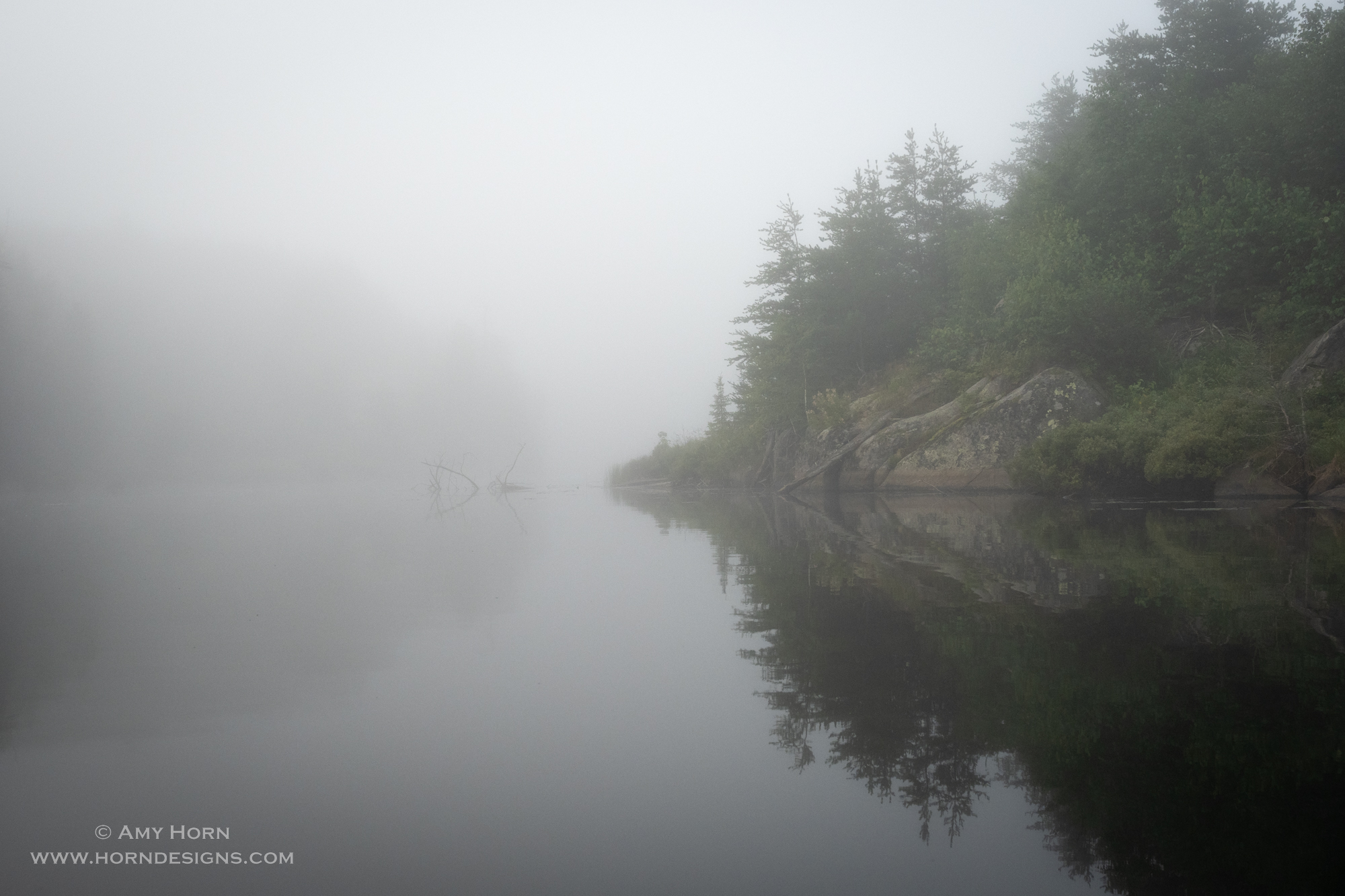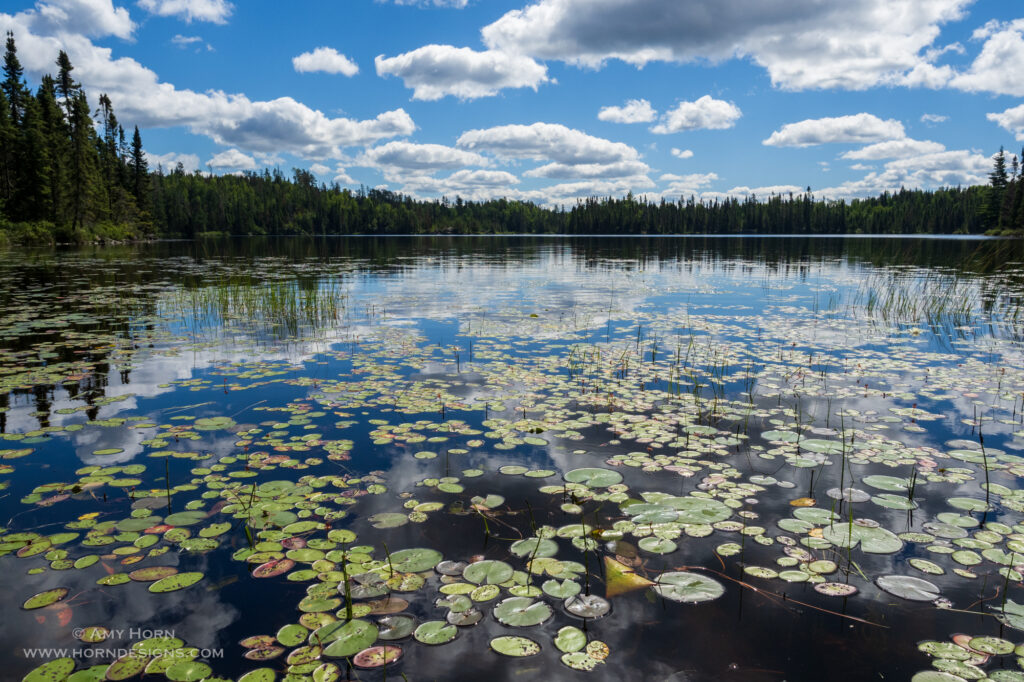
The question asked most about our trip to Minnesota’s Boundary Waters was, “How were the mosquitos?” Well, I have to say, they enjoyed our visit! The mosquitos were thick at times, but we were prepared and dealt with them. I knew very little about the Boundary Waters, so this travel blog shares my new knowledge of the area and our back country adventure.
According to Paul Vincent, the Boundary Waters Canoe Area (BWCA) is one of America’s most remote and cherished wilderness areas accessible primarily by canoe. It extends 150 miles along the U.S.-Canada Border, with over 1,100 lakes and 1,500 miles of canoe routes. It was hard for me to imagine until I saw it firsthand. (Explore Minnesota) In the large lakes, the water is so clean, that it is drinkable without a filter.
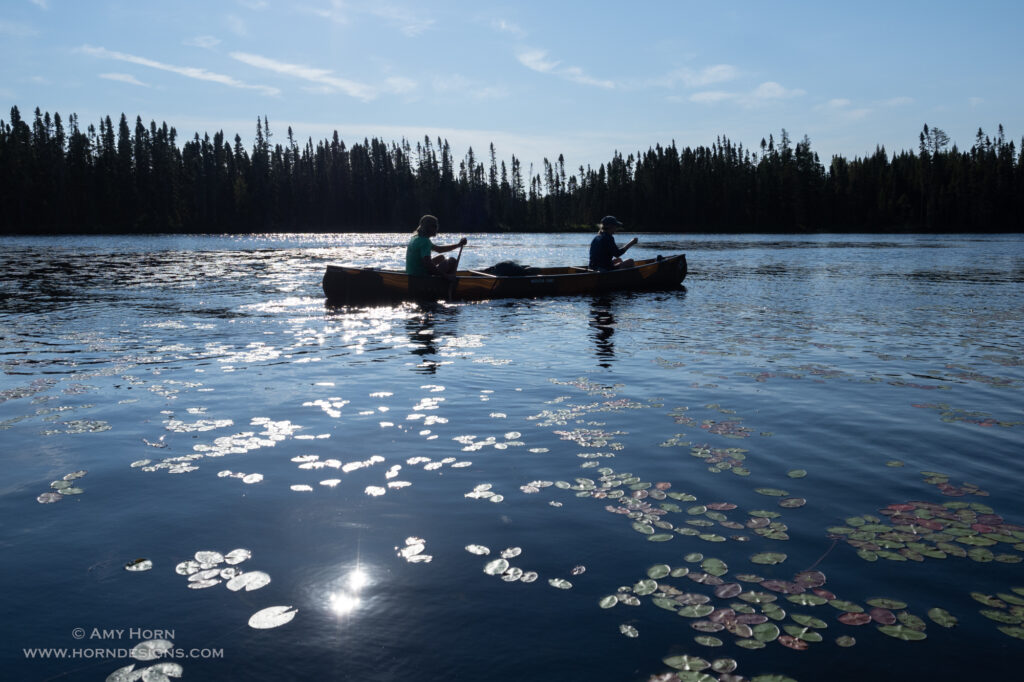
Preparation
Our good friends (Gretchen and Ron) have extensive knowledge and experience in the BWCA, so we followed all their gear recommendations. We brought one wet outfit and one dry outfit for the 6.5 days with additional waterproof gear/warm layers. The clothes were pretreated with Permethrin to discourage biting bugs and it worked well. We also acquired an ultra-lightweight tent, sleeping bags, and chairs to keep us comfy at camp. Of course, I brought a camera, so I bought a waterproof bag (OverBoard Waterproof SLR Bag) that clipped to the canoe or hung over my shoulder. The easy-to-access bag kept me shooting on land and water. Lastly, an outfitter provided us with canoes and packs.
Our group included eight people with four canoes, and each canoe carried two people, with all their gear (personal gear, tent, sleeping bags) along with a portion of group gear (food, stoves, tarp, pans, etc). We carried food, a tarp, and the pancake griddle pans as our group gear. This made for a heavy pack. When I first put it on, I started falling backward. Rod caught me and expressed concern about whether I would be able to carry it all. We estimated the pack was 60 pounds. After cinching down the straps and leaning forward, I was ready to go.
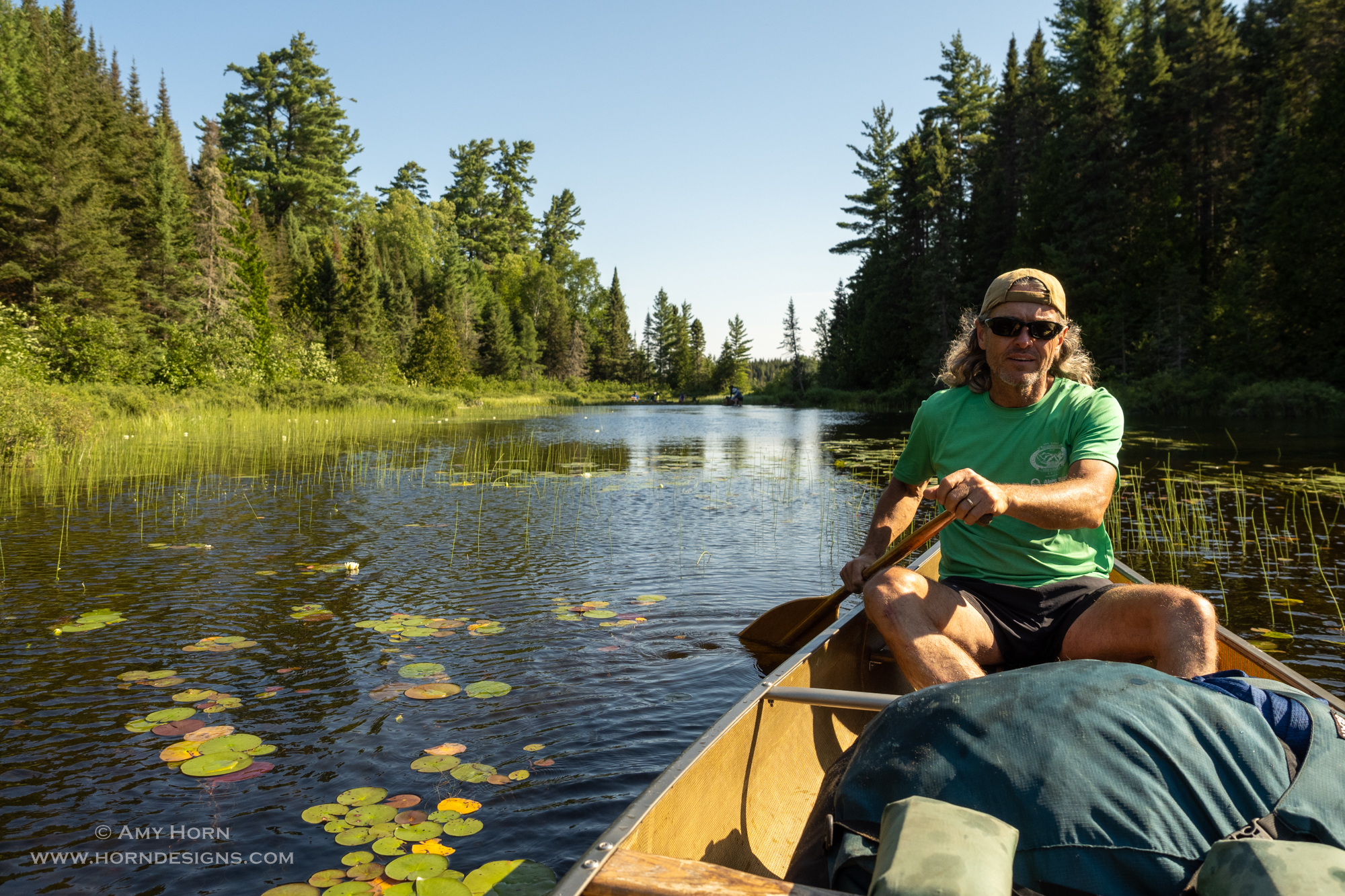
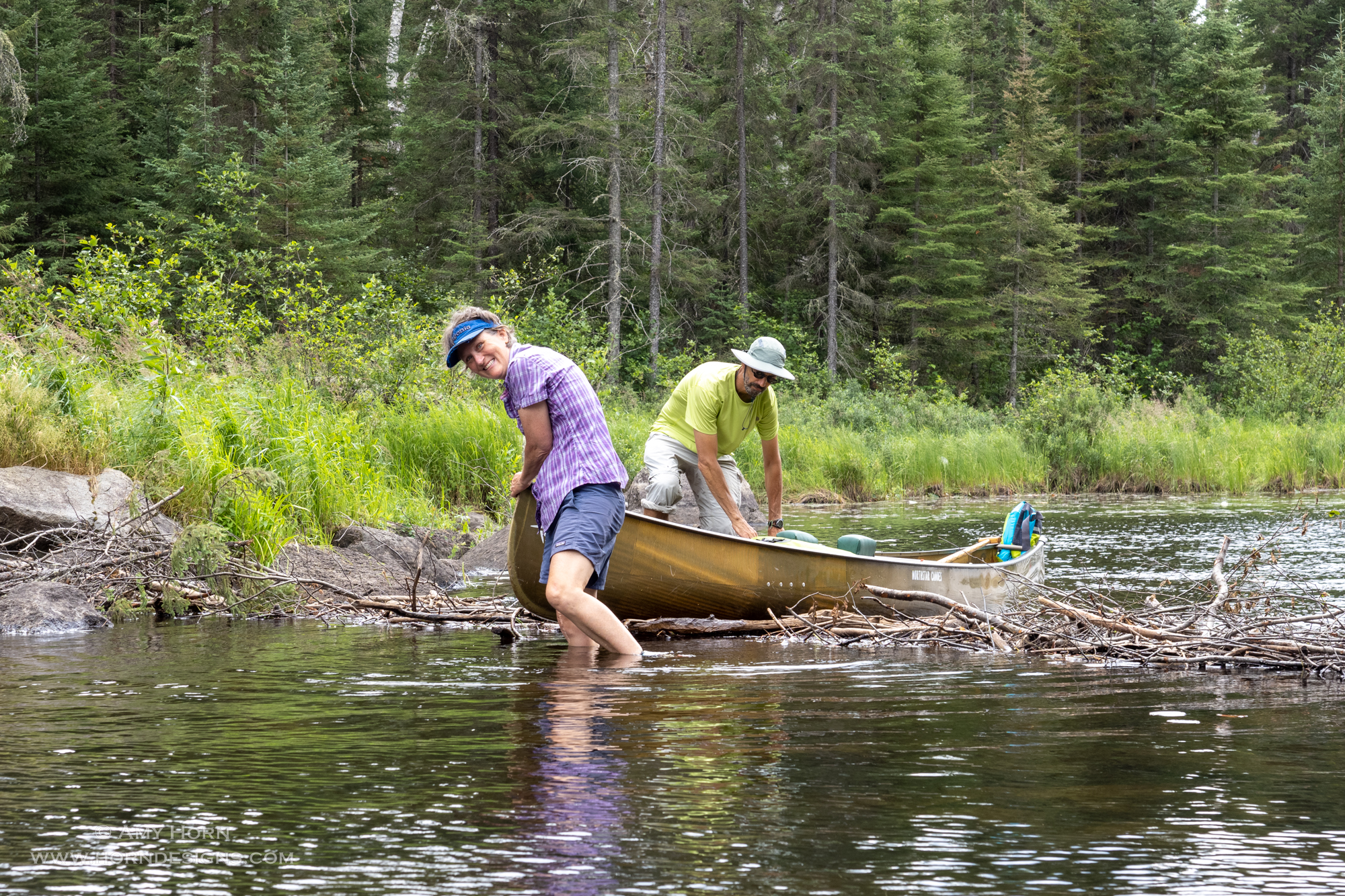
On the Water
We put in at Baker Lake, a small quiet lake with lily pads, flowers, and towering trees along the shore. An amazing sight to see. After a mere 2000 feet of paddling, we got out of our canoes to portage. Portaging consists of carrying your gear (canoe too) across the land to get to the next lake or river. At this portage, we decided to walk the canoes through the stream and bypass the land portage. That put us on Peterson Lake.
In such a short timeframe, we were immersed in nature where the only sounds came from loons, white-throated sparrows, eagles, paddles, and us. As we paddled, Gretchen and Ron taught us how to read the maps identifying approved campsites and portages. We floated past lily pads and dense forests, and occasionally, beaver dams caused us to exit the canoe. After two days, Rod and I were somewhat pros at portaging. He picked up the pack and put it on my back before we left the water. Then, he picked up the canoe, flipped it on his shoulders and we hiked to the other side. Our portages ranged from 25 feet to almost a mile and are measured in “rods” (unit of measurement). 320 rods equal a mile.
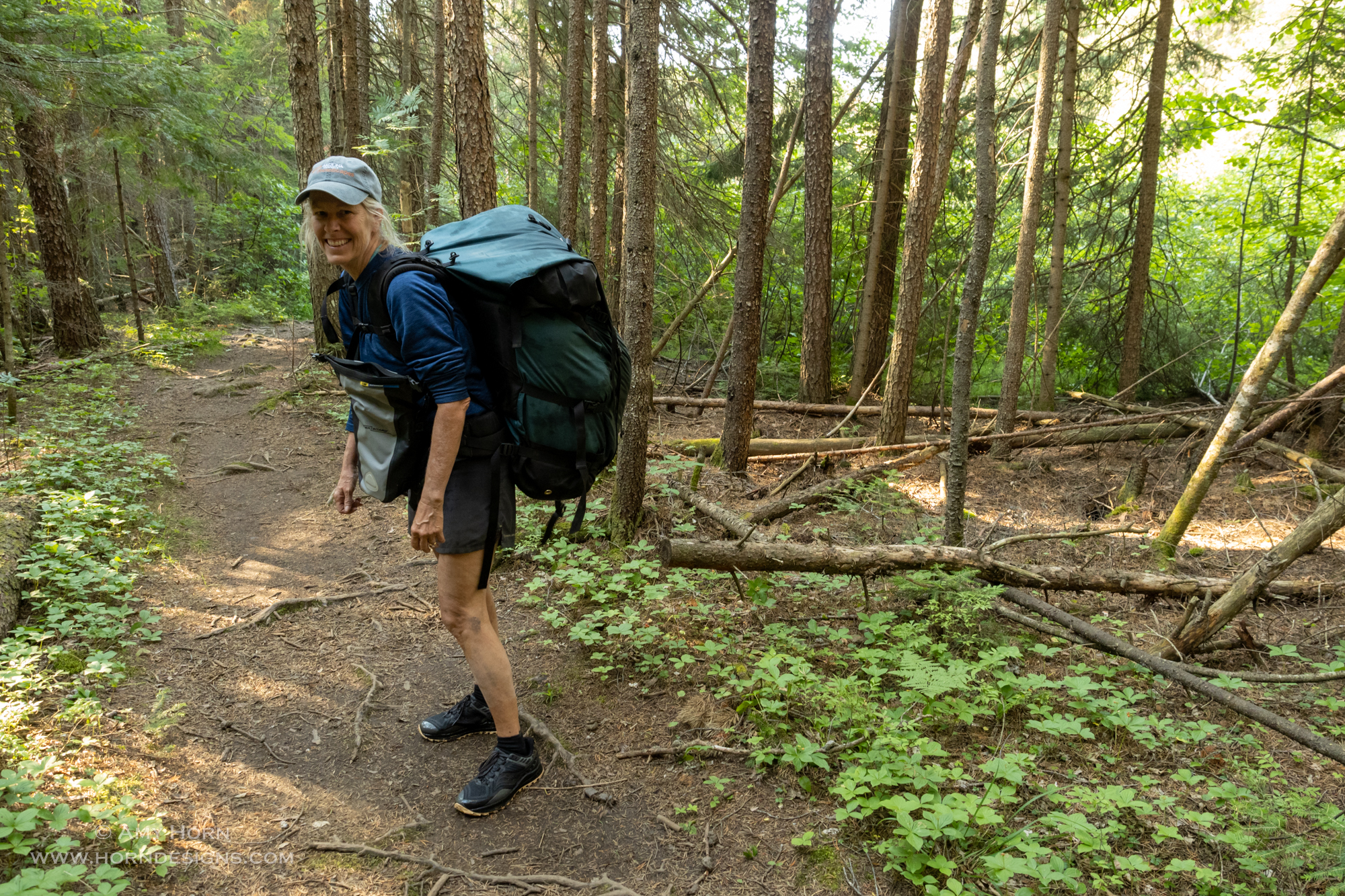
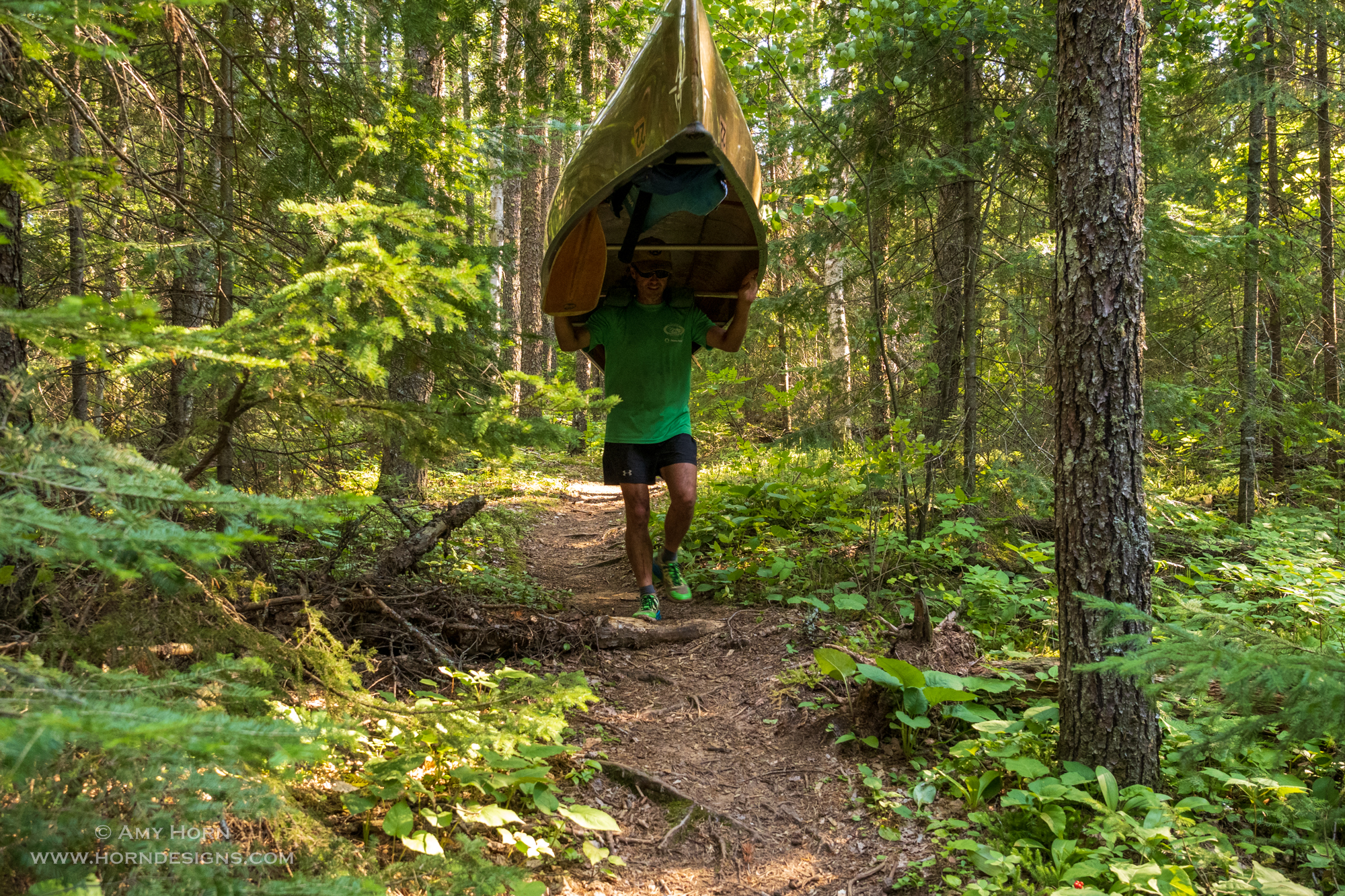
Portaging
The best part of portaging was grabbing the wild blueberries, raspberries, and chanterelle mushrooms. On one portage, others in our group picked a bunch to use in our pancakes the next morning. We saw bear scat, moose footprints, leaches, swans, frogs, and turtles. On a few of the longer portages when I was hiking alone, I did sing out loud to avoid encountering any bear.
We paddled and portaged an average of 7 miles a day with a total of 40+ miles for the week. Although portaging got easier, I slipped once and fell on my back (pack). The pack was so awkward, I looked like a turtle and needed help getting up. Each day, we paddled to a campground for lunch. Sometimes we took a swim, then paddled more to a new campground to pitch our tents for the night. We passed some people on canoes, but most of the time it was just our group. We did encounter rain on several occasions, but we had the right gear, so it wasn’t problematic. It was all so relaxing.

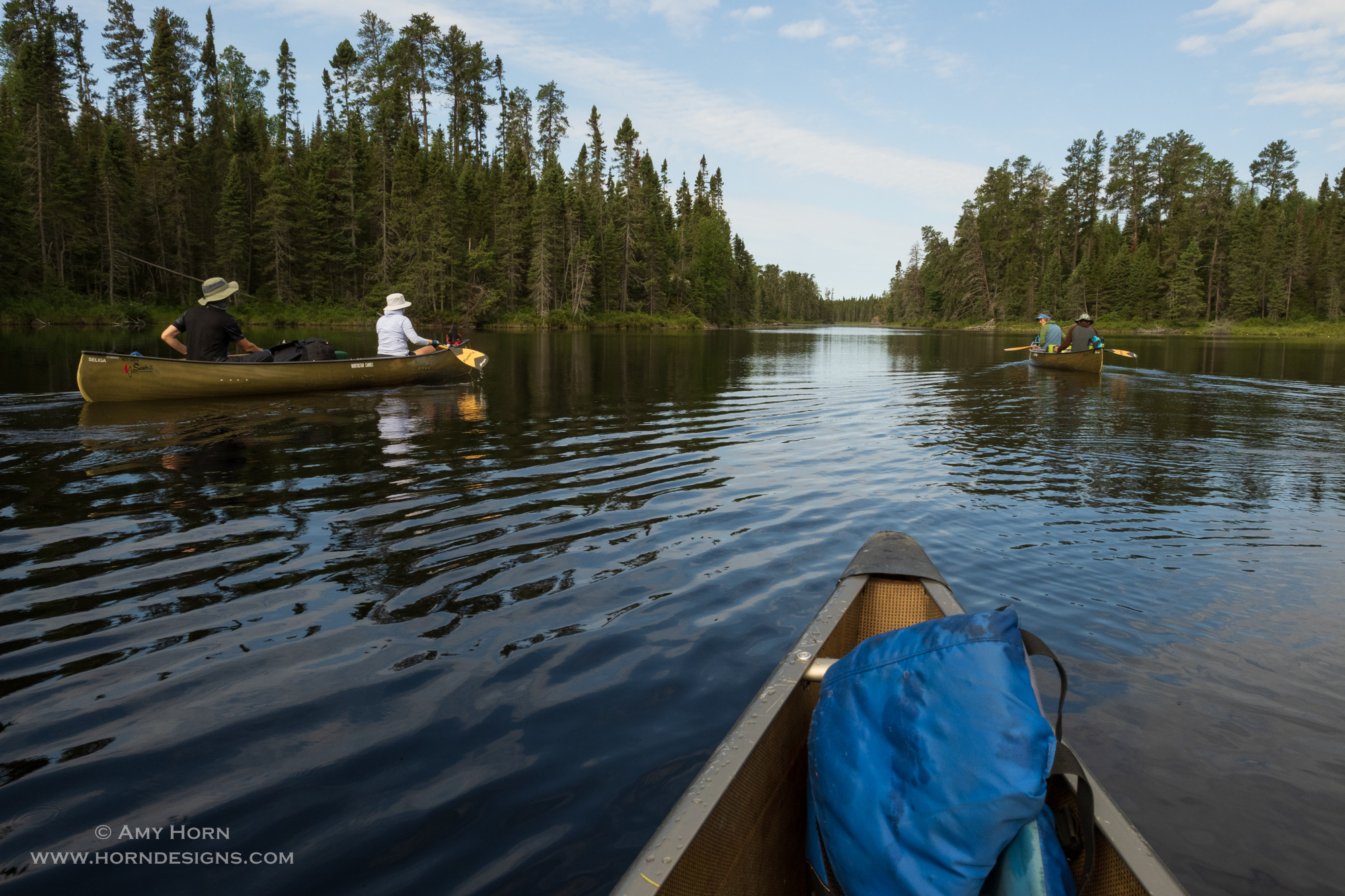

At Camp
Each afternoon was an adventure to find a campsite. Camping is permitted at approved sites only and if you can’t find an open campsite on a lake, you portage until you find another site. Sometimes that meant you went to several different lakes because campsites are not found on all lakes. Once at camp, we pitched tents, set up the tarp, gathered wood, swam, played music, ate, and on our last night, we had a poetry slam. Gretchen challenged us to write a poem based on 5 given words. It was fun seeing the creativity put into each poem. We heard love poems, poems written from the perspective of a swan, from the mosquito perspective, a haiku, and my short and sweet poem sums up my week (bold words were required):
A canoe and paddle we did rent, to float the lake and pitch a tent.
Amy Horn
I hope that every son and daughter get to row on the beautiful Boundary Waters.

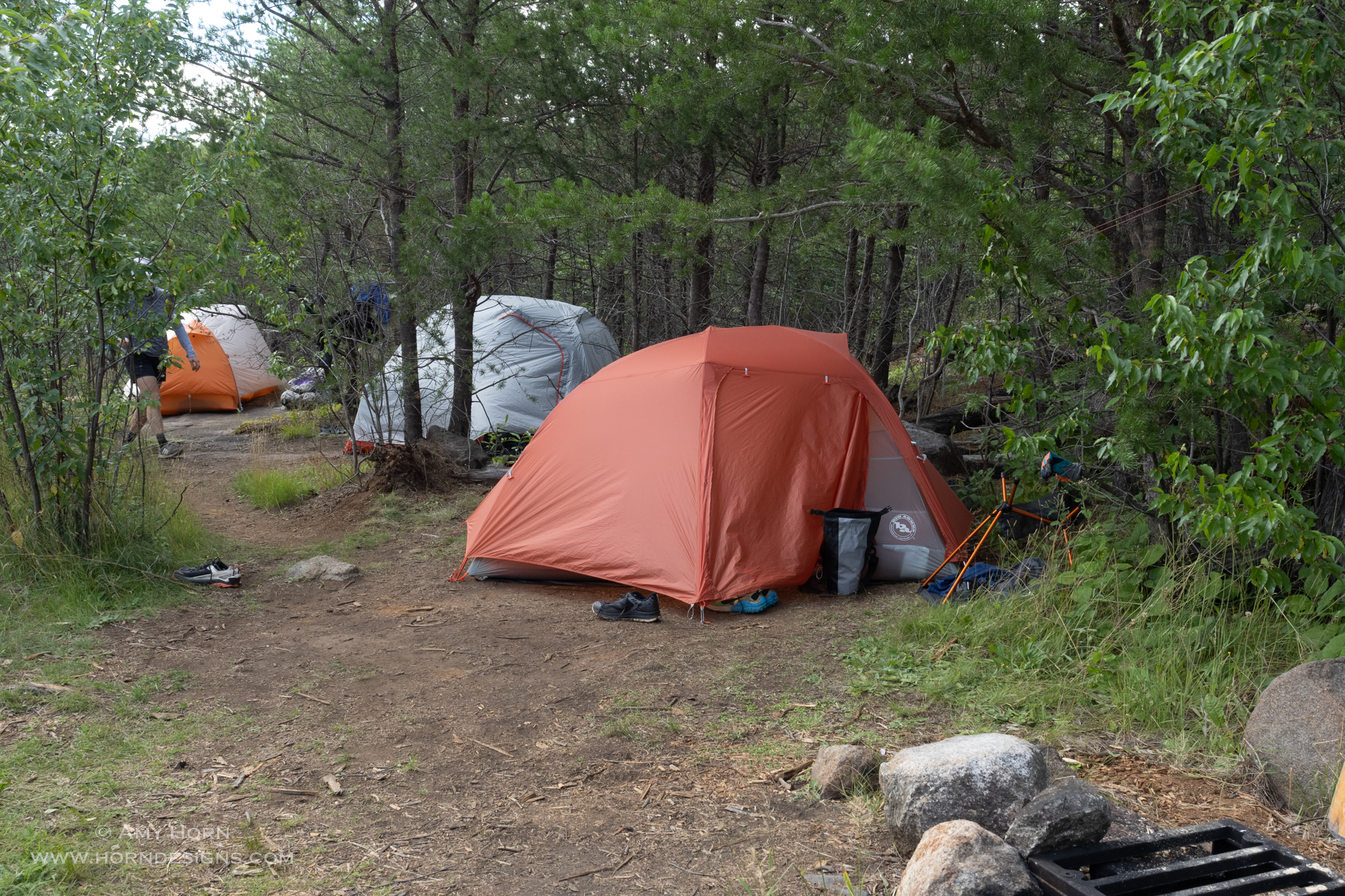
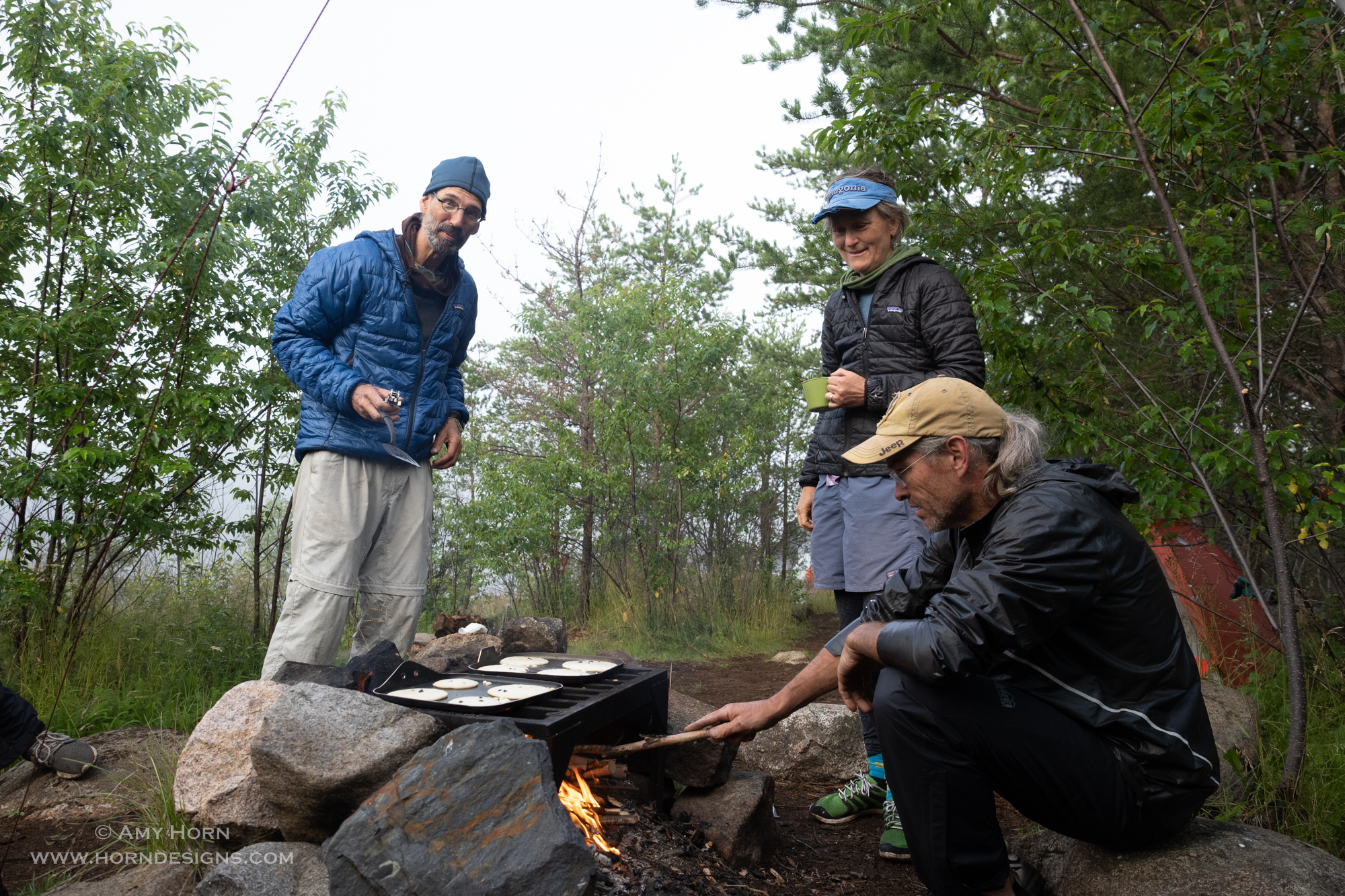
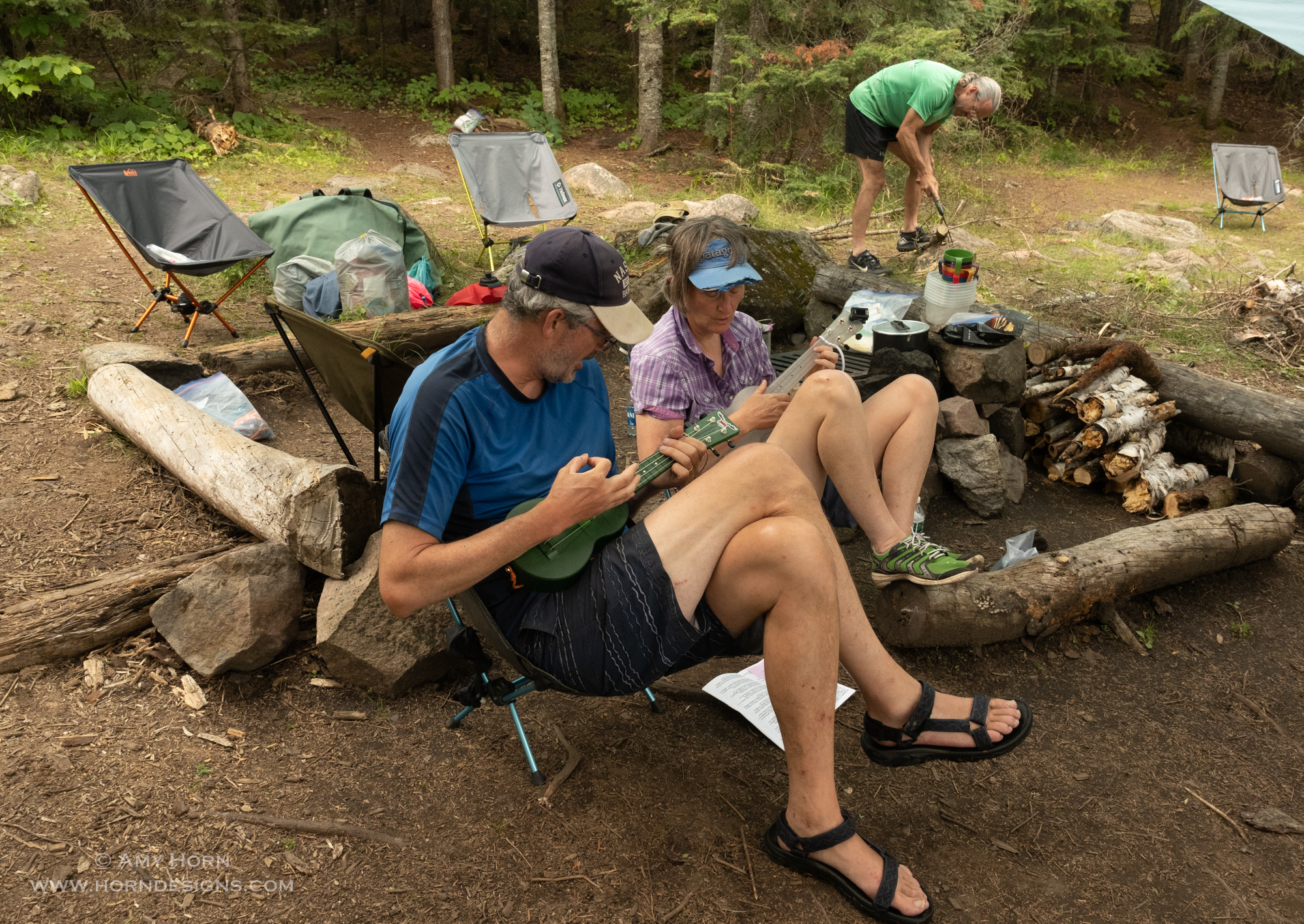
Highlights
Besides the cool things mentioned above, my highlights of the week were many, but my favorite memory was the foggy morning. Before I could even ask anyone to get out in the water on the canoe, Neil and Gretchen offered. And then they had me “duff” (sit in the middle of the canoe) and took me out on the water. It was a magical morning – so quiet and still. When we returned to land, I photographed the dew on spider webs. I could have spent hours at this site.
It has been two weeks since we returned and all I do is think of returning. I didn’t think spending 6.5 days in nature without electronics would have such an impact on me. The BWCA is such a pristine area with fresh water so clean (big lakes only) you don’t need a filter to drink it. I didn’t know that was possible today. Let’s protect this area. The Boundary Waters is threatened by copper mining and if you would like to take action visit: https://www.savetheboundarywaters.org/.
